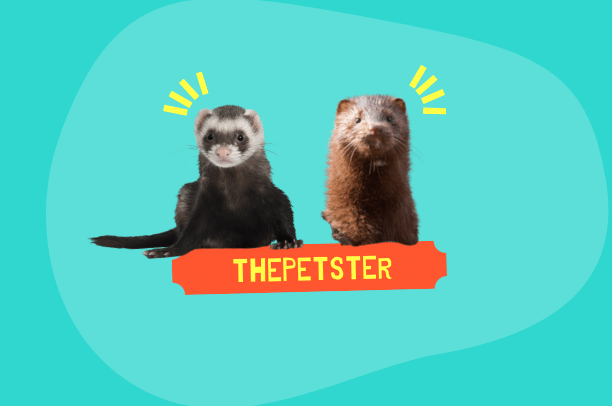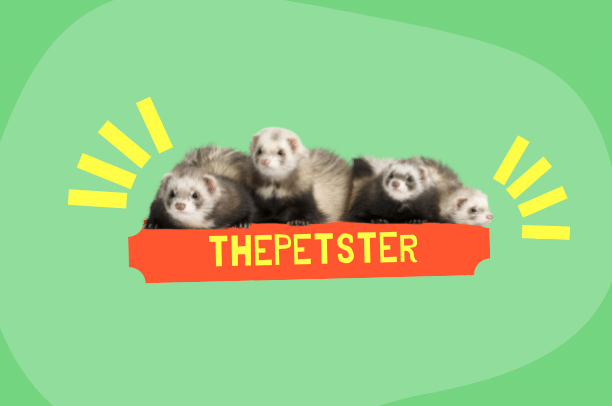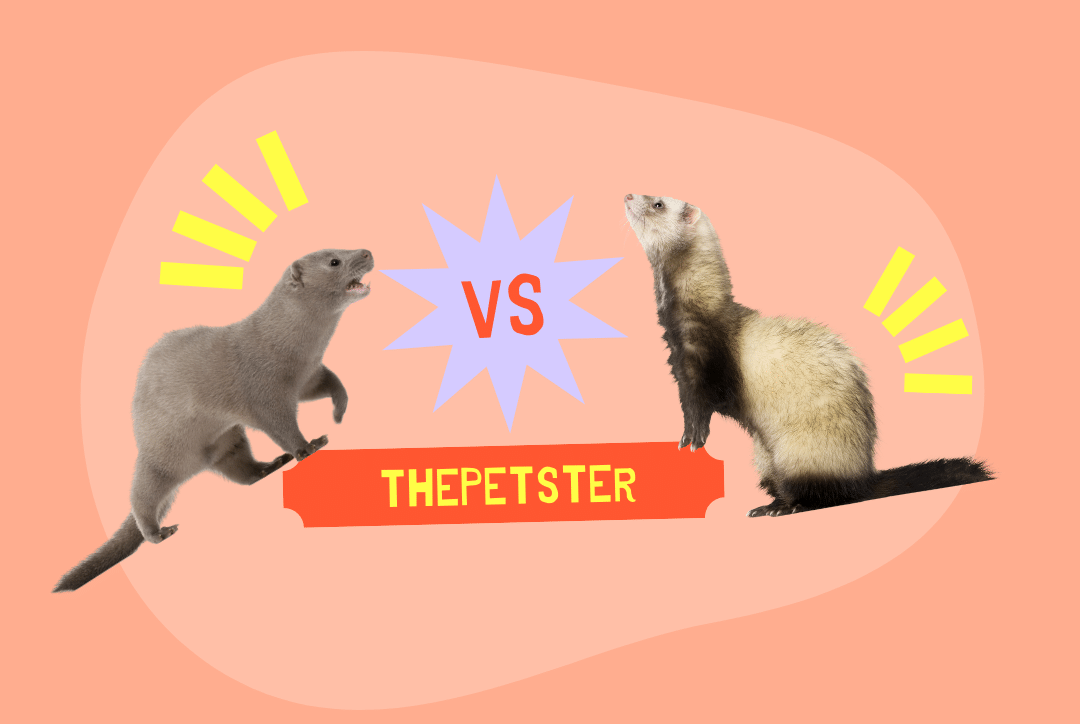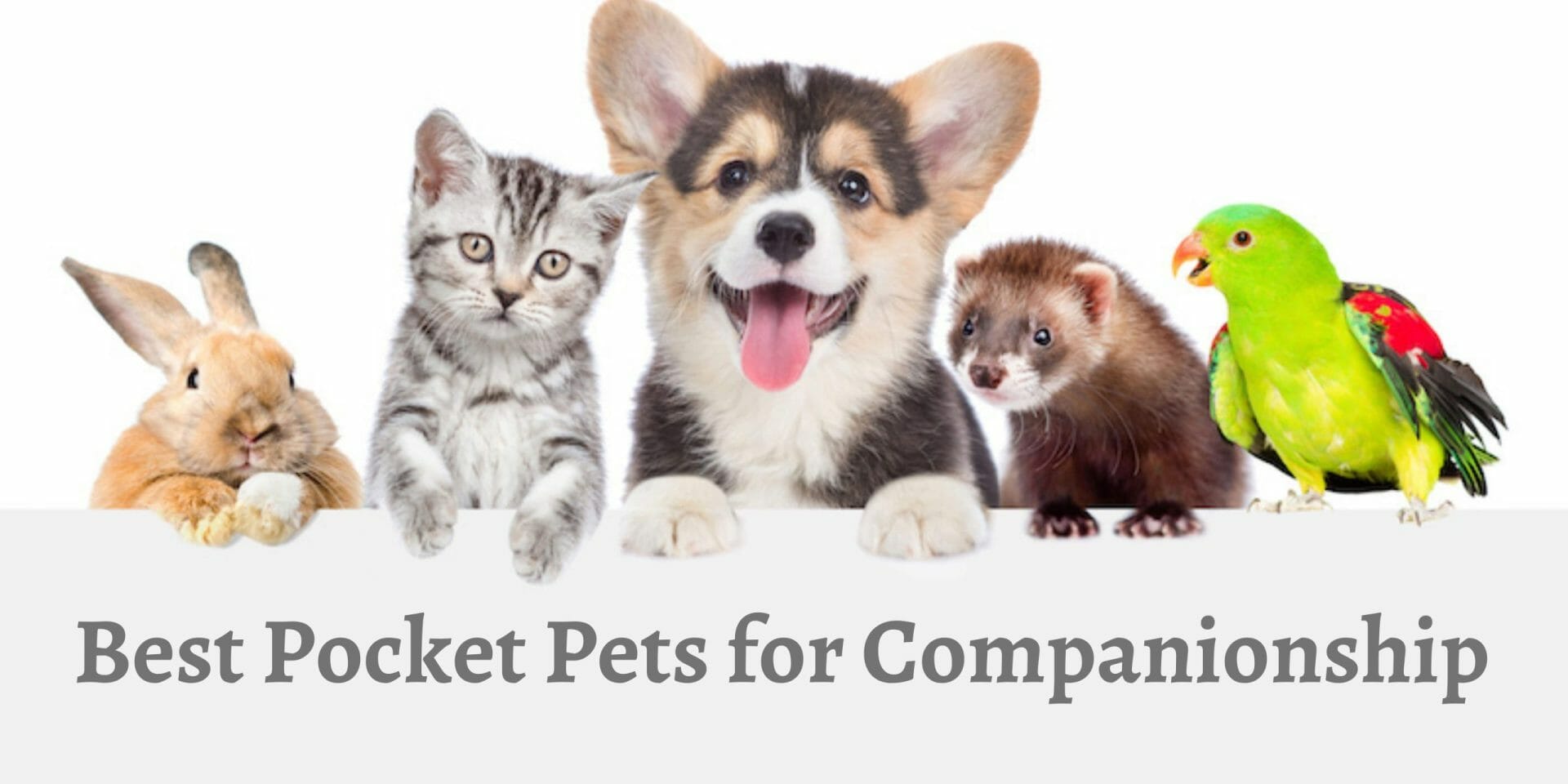Mink Vs. Ferret (Everything You Need To Know)
Although the Mink and Ferret have a similar appearance, they have numerous fundamental differences. First, it’s important to note that while Ferrets make excellent pets, Minks are too wild to keep in a home and need to be sheltered at a zoo or other particular habitat.
Minks and ferrets are both adorable Mustelidae weasels. However, although minks are classified as members of both the Neogale and Mustela genera, ferrets are classified as subspecies of Mustela. In addition, there are some other significant differences between the two mustelids.
What Are The Differences Between Ferrets Vs.? Minks?
If you want to keep one of these ferrets as a pet, you need to be sure it is a European polecat (Mustela putorius). Minks are too wild to be kept as pets, despite their role in rat control. European minks (Mustela lutreola) are far more closely related to polecats. They also have substantial differences in terms of appearance and behavioral patterns. They have a lot of differences. Let’s go over them all below.
1. Differences in Anatomical Structure
Minks and ferrets have remarkable similarities in appearance due to their shared mammalian ancestry. Both mammals are pretty slender, with little round ears and pointed sharp teeth. Additionally, both also have short fur and relatively lengthy tails.
Ferrets and minks are different in size. On average, ferrets can be about 20 inches long (not including their tail). Wild minks can reach 23 inches in length, but farm-bred minks only get 19.5 inches. In terms of weight, ferrets vary from 1.5 to 4.5 pounds, while minks vary from 2 to 7 pounds in the wild.
Minks have a gleaming goat coat. Short, soft skins are also found on ferrets, but they are much less shiny. But the coats are very similar in color. Their coats are usually dark brown or black; however, some are white with markings.
2. Differences in Life Spans
Minks
Due to competition for resources, predators, or other circumstances, minks in the wild often survive only three to four years. On the other hand, Minks typically survive up to 10 years in captivity with good care.
Ferrets
Ferrets have shorter lifespans than minks in both wild and captivity environments. Ferrets usually survive between one and three years in the wild. However, ferrets generally survive 4–6 years in captivity with good care.
3. Trainability and pet adaptability
Minks
Minks are significantly wilder and less domesticated than ferrets. Minks can even be harmful if you don’t know how to manage them and don’t begin training them while they are very young. On the other hand, Minks may be fun for experienced exotic pet owners.
Minks, on the other hand, are natural wild predators. They can kill animals considerably more significantly than themselves and should thus be kept away from other domestic pets such as fish, rats, rabbits, and even small dogs.
Minks have muscular jaws and sharp teeth. They are notorious for not letting go when they bite something and will nip if they feel threatened. They should also be kept away from little children, especially unsupervised.
Because minks can be extremely dangerous as pets, many states in the United States require a special permit to keep them as a pet. Therefore, before taking one into your home, you should check your local laws and regulations.
Ferrets
Ferrets have a better temperament and can be trained easily. Ferrets are intelligent and curious creatures, and with enough patience and consistency, you can learn your Ferret using a litter box or perform a variety of other activities. When training your Ferret, consider that they typically respond positively to a performance appraisal than a punishment.
When it comes to suitability, ferrets are excellent pets for both individuals and families. They will like socializing with other ferrets and domestic pets such as cats and dogs. Your Ferret will also enjoy dating others, which will amuse your guests. While you should still take precautions, you do not need the same experience with a ferret as you do with a mink.
4. Distinctions in habitats
Minks
Minks are a highly energetic species. Minks prefer to run and hunt outdoors, requiring many areas to explore and objects to play with within captivity. When your Mink is small, you can choose a multi-level ferret cage; but as your Mink matures, you will likely want to change to a larger enclosure.
As semi-aquatic animals, minks require access to water where they can swim. Additionally, it would help if you gave enough time for your Mink to move outside of the enclosure. Additionally, you’ll want to engage your Mink in activities that match its natural habitat.
Remember that minks are intelligent creatures while planning the enclosure for your pet. The minks can escape even from the most secure of cages. It means that you must take extra precautions to keep them enclosed.
Ferrets
A ferret will be comfortable in terms of enclosure space, especially when you can give him as much as a mink would need. The minimum dimensions of the enclosure must be 18 inches in height and 24 inches in width. One Ferret usually needs a cage of at least six cubic feet.
Ferret cages are often available locally or in online pet stores. However, always keep in mind that ferrets have incredibly sharp teeth and may attempt to chew their way to break out of a cage if not careful. As a result, it is preferable to use a metal cage instead of a plastic enclosure.
Hammocks for resting, food, drink, and toys to play with should all be provided in the cage. Additionally, it would help if you took your Ferret out from the enclosure for at least 3 – 4 hours each day to play and explore.

5. Dietary differences
Minks
Minks are inbred hunters. They hunt piglets, snakes, and birds in the wild, relatively large animals. Because minks can swim well, they search for aquatic animals like snakes, ducks, frogs, and toads.
In captivity, minks necessitate a primarily protein-rich diet. In general, a high-protein ferret or cat meal, or other types of raw protein diet, will be suitable for your Mink; however, you should consult with your veterinarian to make sure.
Ferrets
Ferrets are also predators, but they typically prey on smaller animals like mice or other small rodents in the wild. When ferrets hunt in the wild, they consume their prey in its whole. When the Ferret catches its prey, it eats everything in its stomach, including the meat, bones, and tissues.
Your veterinarian should always provide detailed advice about the type of food to feed your Ferret. It is best not to feed your domesticated Ferret the same food as a wild ferret because it’s dirty and nasty. On the other hand, your Ferret should be fed a diet heavy in protein and fat while limiting its intake of carbohydrates and fiber.
6. Distinctions in health requirements
Minks
In terms of health, minks are susceptible to concerns such as:
- UTIs (Urinary tract infections)
- Pneumonia
- Bacterial infections
- Mastitis
- Viral enteritis in mink
- Aleutian disease
- Influenza
Regular veterinary care will be needed if you keep a pet mink. Before bringing a mink into your home, you should consult local veterinarians to check that they can care for such a mink, as not all veterinarians are. In addition, minks require routine vaccinations to remain healthy, including distemper, rabies, and some other yearly boosters.
Ferrets
Domesticated ferrets have specific health issues with minks, but not like many. Some frequent health issues include:
- Adrenal cancers
- Heart problems
- Issues with the respiratory system
- Parasites
- Dental Issues
If you have a ferret-like mink, you’ll need to take it to the veterinarian for checkups every few months. You should always call your local veterinarian to see if they can care for a ferret. It will be pretty easy to find a veterinarian for a ferret than a mink because they are more popular pets.
If you have any queries about your Ferret’s health, your veterinarian may provide any required vaccines, such as rabies shots, and guide general care.
7. Distinction in geographical location
Minks
Originally from North America, minks can now be found around the world. Minks in the wild are classified into two distinct species: the European and the American Mink.
Most European minks are currently located in Russia; however, they can also be found in Spain, France, and Romania. Other than North America and South America, American Minks can be found in the United States and Europe continents.
Previously, a third mink species known as the sea mink lived in the Gulf of Maine. On the other hand, sea minks are thought to be extinct now.
Ferrets
Although ferrets are a very common domesticated pet, their wild counterpart is no longer as numerous in the wild as it once was.
Only one ferret species, the black-footed Ferret, survives in the wild in America. This species is critically endangered and was considered extinct at one point.
Instead of ferrets, they’re referred to as polecats in various parts of the country. Additionally, wild ferrets can be found in a few other places throughout Europe and Asia. Before bringing a ferret or mink home, make sure your state allows them.
8. Temperament Variations
Minks
Minks are wild creatures that have not been domesticated. Therefore, they have a strong territorial instinct. Males frequently engage in territorial conflict with other males but may welcome females.
While they share the Ferret’s inherent curiosity, they are less prone to prefer human company and cuddling.
Ferrets
On the other hand, Ferrets are better suited to live like a family pet. They are active, playful, and can create close relations with their owners.
However, it is critical to handle them properly from an early age and socialize them with other people to promote the best temperament.
They are friendly, sociable creatures that thrive best in small groups. However, some ferrets may require solitary confinement. This is entirely dependent on the individual.
Ferrets are an excellent choice for small pets to build a strong connection because they are incredibly affectionate.

Which Is a Better Pet, a Mink or a Ferret?
The Ferret, on the whole, is a better pet for a family with children. They don’t need as much space, and their settings are more straightforward.
Additionally, they are domesticated. Ferrets can be trained to love human company and cuddling if adequately cared for at an early age.
Minks require more space to explore and run, and they can be pretty territorial, resulting in aggression toward you.
If you are interested in bringing one of these cute little furry mammals into your home, you should look for a reliable ferret breeder.
Which Breed Is the Best Choice for You?
Small burrowing animals can be found and fought by closely related mustelid species that can enter tunnels. Even when hunting for food, the Mink has an advantage over the Ferret. However, while the Ferret has become a popular breed, the Mink is kept for mink oil, fur farming, and ratting.
When choosing a Mink and a Ferret, you can select the Ferret. A ferret is a relatively inexpensive pet that is significantly better suited for indoor living. The Mink will need more attention and larger surroundings than the average individual can provide. In addition, their affectionate and curious personality will make them excellent companions for many years.
Related Posts
- Feather Leg Baboon Tarantula (Everything You Need To Know)
- Blue Baboon Tarantula (Everything You Need To Know)
- Trinidad Olive Tarantula – All Facts
- Purple Bloom Tarantula – All Facts
- Brazilian Jewel Tarantula (All Facts You Need To Know)
- Mink Vs. Ferret – All You Need To Know
- Why Do Cats Put Their Butt In Your Face?
- Why Does Your Hamster Smell? (Great Tips To Smell Better)
- How to Cut an Uncooperative Dogs Nails (Easy Guide)
- How Do Keep Cats Away From Rabbits? (Easy Guide)



